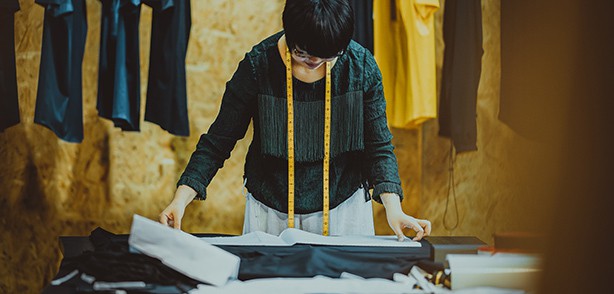March 05, 2020
How To Start A Clothing Business
If you believe you could benefit from this type of venture, you’ve come to the right place. Below, we’ll discuss how to start a clothing business that succeeds.



Clothing Businesses Are Exploding in Popularity
Clothing businesses are more popular today than ever before. In fact, you may be surprised to learn that the garment and textile industry is worth over three billion. Every year, it grows by around 4 percent. Menswear and womenswear continue to increase annually as well by over 10 percent. These figures make it clear that clothing businesses aren’t going anywhere any time soon. Americans will continue to spend a lot of their hard earned money on various clothing items. Clothing reflects their personalities while giving them confidence. Plus, it brings great joy and excitement to their lives. If you have a passion for clothing and want to make money on it, now is the perfect time. While you’re bound to face some serious competition, a bit of hard work, patience, and creativity can steer you in the right direction. Keep in mind that your business won’t become an overnight success. After all, it takes years for many clothing businesses to thrive. Large clothing retailers like Abercrombie & Fitch, Lululemon, and Nordstrom had to start at the bottom initially. Over time, however, they grew into the massive, high-revenue corporations they are today.The Steps: How To Start A Clothing Business
There are numerous steps you’ll need to follow to get your clothing business up and running. By following each of them, you can increase your chances of short-term and long-term success. Without further ado, here’s what you’ll need to do to start a clothing business.Deciding Upon A Niche
Perhaps the most important part of starting a clothing brand or business is choosing a niche. There are countless niches you can choose from, so you’re bound to find one that works for you. For example, you could start a brick-and-mortar store for pregnant women, or an online boutique that sells exercise gear. If you sew, you can offer alteration services. And if you enjoy giving fashion advice, consider working as a personal stylist. Before you decide on a niche, consider your interests, passions, and budget. Remember that a brick-and-mortar store will likely cost more upfront than a personal styling business. Also, much time you want to commit to your venture? Although all clothing businesses will be time-consuming, some will require more time than others. An alteration service, for example will likely be more involved than an online clothing store. Looking at your competition or business leaders that you admire can also help you niche down. If there are ten wedding dress businesses in your local area, opening one may not make sense. On the other hand, if there are none and you love weddings, this may be the ideal route to take.
Developing Business Plans and Budgets
Once you’ve selected your niche, it’ll be time to develop your business plan and budget. Your business plan should include the following:- Executive Summary
- Business Description
- Products and Services
- Market Analysis
- Finances
Business Organization
There are several important factors you’ll need to consider in order to organize your business including:- Location

- Management
- Daily Operations
- Sales and Marketing
- Funding
- Insurance
Design Development
Developing your designs is one of the most exciting parts of the process. If you plan to create the clothing designs yourself, grab a piece of paper and start sketching. Also, you can look for inspiration online or in retail magazines. After you nail down your clothing line designs, use a program like Adobe Illustrator to convert them to a digital format. Then, jot down the details and specifications of each clothing item you sketch. Include any materials, measurements, and unique features. Not designing the clothing line from scratch yourself? No problem! Conduct research and find a designer that you trust and admire. There are plenty out there, so you’re bound to find one or a few that meet your needs. If your clothing business involves personal shopping or alterations, you can skip this step as it doesn’t apply to you.Brand Development
After your designs are finalized, you’ll need to focus on building your business's brand. Since your brand can make or break your business it’s an important step that you should take very seriously. Here are some questions that can help you develop your brand:- What products and services do I offer?
- What makes me different from my competitors?
- What types of potential customers am I targeting?
- How do I want people to feel when they come in contact with my brand?
- Does my business solve a specific problem?
- Are there existing brands I like and can use as inspiration?
Manufacturing of your Product
Manufacturing is a fun stage because it allows you to bring your design visions to life. At this point, you’ll need to perform some research to find the right manufacturer. Consider what’s important to you from a manufacturing perspective. Is it speed? Reliability? Cost? Experience in your industry? Understand that it’s unlikely that a manufacturer will meet all of your criteria, so you must decide what’s most important to you. Once you’ve chosen a manufacturer, be sure to test them out by sending them a design and asking for a small batch of clothing items. If you’re satisfied with the batch, congratulations! You’ve found your manufacturer. Displeased? Keep looking by asking other professionals for referrals or reading online reviews. If your clothing business doesn't require manufacturing, skip this step.